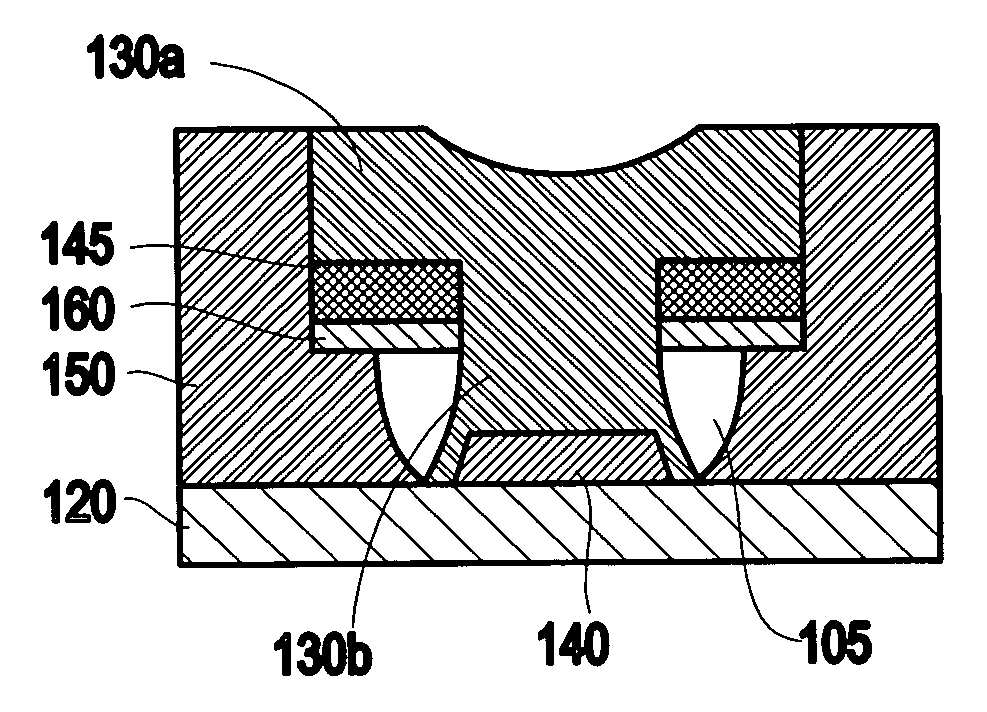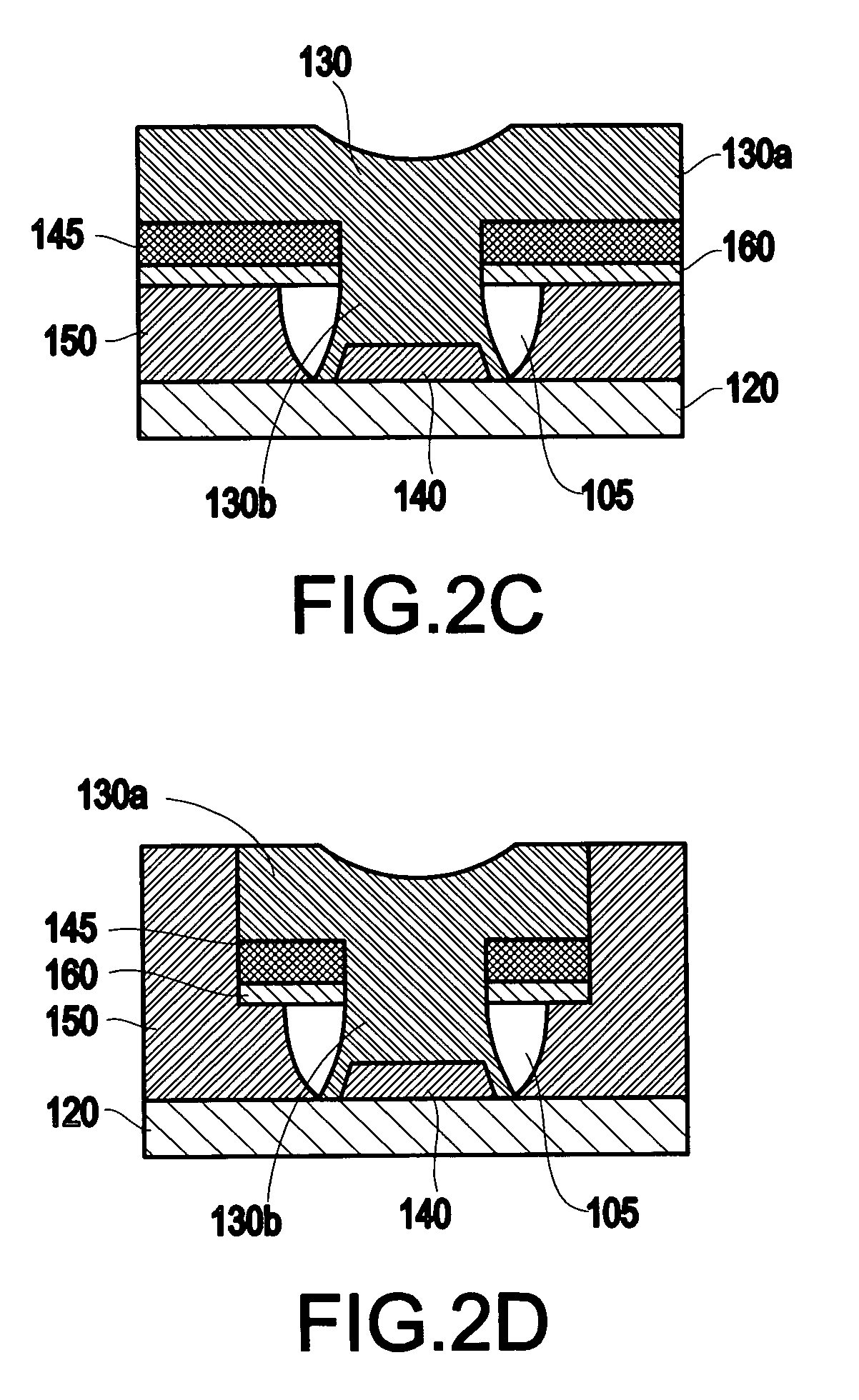Phase-change memory cell and method of fabricating the phase-change memory cell
a phase-change memory and memory cell technology, applied in the field of phase-change memory cells and a method of fabricating the phase-change memory cells, can solve the problems of large-scale adoption of the phase-change mechanism for memory, the need to individually break-in each chalcogenide element for reproducible operation, etc., to achieve the effect of improving device yield and reliability
- Summary
- Abstract
- Description
- Claims
- Application Information
AI Technical Summary
Benefits of technology
Problems solved by technology
Method used
Image
Examples
Embodiment Construction
[0033]Referring now to the drawings, FIG. 1 illustrates a conceptual diagram of a memory cell 100 according to the present invention, and FIGS. 2A–2D, 3A–3D, 4A–4D, 5A–5D and 6A–6D illustrate exemplary embodiments of methods of fabricating the memory cell, according to the exemplary aspects of the present invention.
[0034]In a first exemplary aspect of the present invention (e.g., illustrated in FIG. 2D), a memory cell includes an insulating layer 150 formed on a first electrode layer 120, the insulating layer having an first opening 155, a stencil layer 160 formed on the insulating layer, and having a second opening 165 formed in an area of the first opening 155, a phase-change material layer 140 formed on a surface of the first electrode layer 120 in the first opening 155, and an electrically conductive layer 130 comprising a first portion 130a formed on the stencil layer 160 and defining a second electrode layer and a second portion 130b (e.g., a pillar-shaped structure) formed on...
PUM
| Property | Measurement | Unit |
|---|---|---|
| temperature | aaaaa | aaaaa |
| temperature swing | aaaaa | aaaaa |
| area | aaaaa | aaaaa |
Abstract
Description
Claims
Application Information
 Login to View More
Login to View More - R&D
- Intellectual Property
- Life Sciences
- Materials
- Tech Scout
- Unparalleled Data Quality
- Higher Quality Content
- 60% Fewer Hallucinations
Browse by: Latest US Patents, China's latest patents, Technical Efficacy Thesaurus, Application Domain, Technology Topic, Popular Technical Reports.
© 2025 PatSnap. All rights reserved.Legal|Privacy policy|Modern Slavery Act Transparency Statement|Sitemap|About US| Contact US: help@patsnap.com



